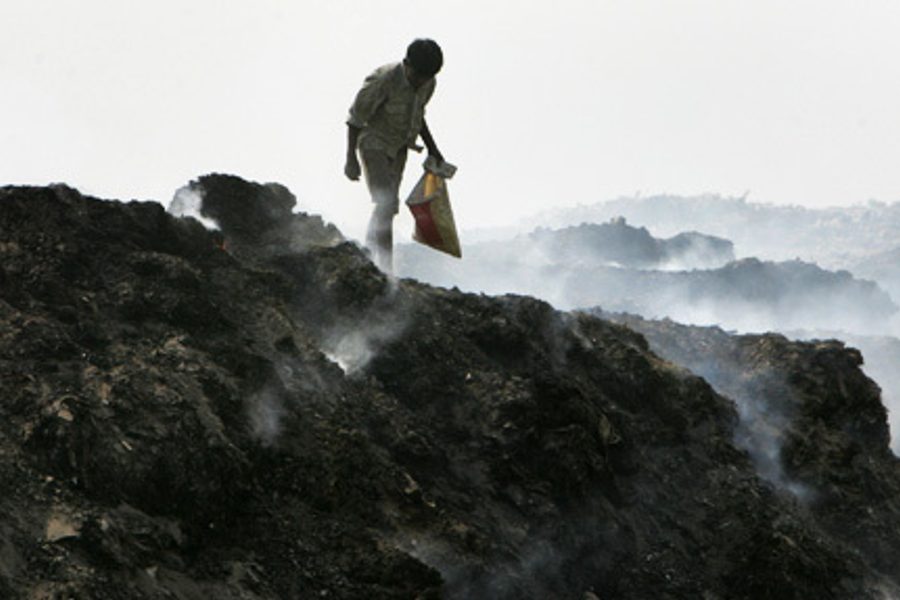
An estimated 15 million people around the world earn their living by gleaning recyclable materials from garbage dumps. Though they belong to the informal economy, waste pickers are an integral part of waste management in many cities. Nearly 60% of Delhi’s solid waste is recylced by waste-pickers.
The Kyoto Protocol allows developing nations to offset their carbon emissions with so-called clean development projects. This system is known as the “Clean Development Mechanism” (CDM). Approved CDM projects include waste-to-energy incinerators that burn trash, for fuel and landfills that capture methane gas emitted from decomposing material. (Opponents of methane capture projects note that the easiest way to stop methane gas emissions from landfills is to separate organic materials and compost them, instead of tossing them in with the non-biodegradable trash.)
At the UN climate talks in Bonn this week, officials are planning ambitious finance schemes to build more incinerators and methane-capturing landfills. Waste-pickers oppose these projects because they separate the pickers from the trash — either it gets burnt up, or it gets buried to rot.
Waste-pickers had no voice in global climate change negotiations until 2009, when numerous organizations of salvagers teamed up with an NGO called the GAIA foundation. (GAIA is an acronym that stands for “Global Anti-Incinerator Alliance”).
Yesterday, GAIA made its case at the UN talks. Anti-incinerator activists are concerned that financing is going primarily to high-tech incinerator and landfill projects and bypassing the waste-pickers.
GAIA and its allies want support to bring waste-pickers out of the informal economy and into the mainstream. Mainstreaming these workers, GAIA argues, will result in better working conditions, greater productivity, and ultimately, enhanced carbon offsetting. The effort to mainstream waste-picking is well underway in Latin America where waste-pickers in several countries have banded together to form collectives. Kagad Kach Patra Kashtakari Panchaya is a trade union that represents many of the 6,500 waste-pickers in Pune, India.
Waste-pickers are on the front lines of the battle against climate change. In general, recycling is one of the most efficient ways to reduce carbon emissions. Recycling not only saves the carbon that would have been emitted by burning the trash, but also the energy and resources that would otherwise have gone into replacing the item from virgin materials.
The waste-picking sector is also labor intensive. Big budget projects like incinerators and methane farms will only employ a fraction of the number of people who currently make their living salvaging recyclable material. GAIA notes that, even in developed countries, recycling creates ten times as many jobs per ton of waste as incinerators or landfills.
A spokesperson for the Clean Development Mechanism said that waste-pickers were welcome to submit their own applications for UN climate credits. If they can prove, using the UN’s methodology, that their efforts are offsetting carbon emissions, they too are eligible. That’s encouraging in theory, but waste-picker collectives and their allies are at a considerable disadvantage in this endeavor compared to multinational corporations that can hire consultants to crunch their numbers.







